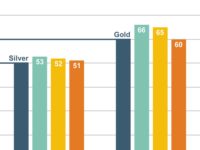Project Overcomes Requirements To Achieve Gold






Rochester's Cornerstone Group, Ltd. (RCG) and PathStone Corporation, developers in Rochester, N.Y., always dreamed of doing a project together—one that would be special, break the typical mold, and become a forward-thinking model.
After reviewing the communities’ housing needs, the two corporations created a plan for a building that combined the New York State Homes and Community Renewal (NYSHCR) 9 percent tax credit program and the Department of Health’s (DOH) licensed Enriched Housing Program for frail seniors – the first of its kind in New York state. The project was designed to comply with the Governor’s Medicaid Redesign Team (MRT), a program that aims to achieve measurable improvement in health outcomes, sustainable cost control, and a more efficient administrative structure.
The Greece Baptist Church in Greece, N.Y., owned property where a conventional senior project was already being planned and under option by RCG. This site proved to be the perfect location for the Long Pond Senior Housing project.
Somewhere between independent and nursing home living, a group of seniors (62 – 80+) have a need for something else. A better-fit living situation will save Medicaid a significant amount of money and allow these seniors to remain in their communities. RCG and PathStone brought in Family Service Communities to administer the Enriched Housing Program and provide the meals and case management services.
Funding from NYSHCR made this project possible, but the combination of DOH medical requirements and the NYSHCR’s technical requirements did not mesh, and resulted in many discussions and negotiations until the details were finally worked out. In addition to medical requirements to turn 30 of the 54 units into enriched units for the DOH, the team had to take NYSHCR’s design handbook and fit 54 units into 53,000 square-feet, within a per-square-foot budget, and convert 25 percent of the building’s space into a shared common area, constrained by living and dining space minimums.
In order to be competitive for NYSHCR funding, the RCG-PathStone team also chose to include Optional Green Building Program Points and LEED for Homes in their application. To help maneuver this process, RCG-PathStone asked green rater Sustainable Comfort Inc. of Worcester, Mass., to join the team. Additionally, general contractor LECESSE Construction Company of West Henrietta, N.Y.; SWBR Architects of Rochester, N.Y.; Marathon Engineering of Swedesboro, N.J.; and M/E Engineering of Rochester, N.Y. became part of the project.
Despite the many -–sometimes conflicting-- requirements, delays, and harsh winter conditions, the project was completed on time and the building achieved LEED for Homes Gold from the U.S. Green Building Council, the second highest level of certification. Ryan Brandt, Project Manager for RCG said, “For the team to work collaboratively through many obstacles and then come out on top was impressive. Sustainable Comfort Inc. really helped us stay on target.”
“We received LEED Gold. We only needed to be LEED Certified [lowest level of certification] and thought we’d obtain Silver,” explained Tim Zigarowicz of SWBR Architects.
Dan Brewster of LECESSE Construction cited the LEED Gold designation as a personal goal for the project team and credits the design team for the honor. “There’s certain criteria for LEED. A lot of the credit goes to the design team, they set it up for Silver, got it approved and turned it over to us. We saw additional items to get more LEED points, hence the LEED Gold. The design team generated a base line and we took it a step further,” he said. “To achieve this, we took a proactive approach to managing the project. We sat down with Sustainable Comfort Inc. and asked what we could do to get Gold.”
To achieve LEED Gold and superior energy efficiency, the project had to reduce wood waste by using panelized off-site construction. The apartments averaged a Home Energy Rating System (HERS) Score of 51, roughly a 49 percent reduction compared to a home built to code. The combination of high efficiency central hot water boilers, furnaces and air conditioning; advanced air sealing strategies; energy efficient lighting and appliances; and upgraded insulation resulted in high-energy performance. Also, the site is close to several amenities and a transportation system, another major advantage.
Long Pond Senior Housing is a one-of-a-kind project. Not only does it allow seniors to live in a situation best suited for the level of care they need, but the LEED Gold standard demonstrates that the building is clean, healthy, and efficient, and a source of pride, thanks to the funding agencies, which drove the development teams to create more sustainable, comfortable, efficient homes.
“Having affordable housing that is also LEED for Homes Gold is not what the residents expected, but now they can take pride in the building, landscaping, and site location. And we, the owners, can sleep easy knowing that it’s built to a high standard,” explained Brandt. “Knowing they are in a healthy, efficient building with Energy Star appliances and a great location can give residents peace of mind.”
“This isn’t your standard building. It’s very efficient and comfortable and enables all these residents who grew up in the community to stay in the same area,” concluded Zigarowicz.
Permanent Funding Sources for the Long Pond project included:
- Community Preservation Corp – Commercial Loan - $1,600,000
- New York State Homes & Community Renewal – Housing Trust Fund Loan - $4,000,000
- Monroe County – HOME Funds - $200,000
- NYSERDA - $135,000
- 9 percent LIHTC Equity (Red Stone) - $4,700,000
- Town of Greece - Community Development Block Grant - $10,000
- Class B Member Capital Contribution - $175,000
- Managing Member Capital Contribution - $25,000
- Deferred Developer Fee - $168,000
Total Development Costs for the project = $11,013,000.
Looking for a reprint of this article?
From high-res PDFs to custom plaques, order your copy today!








